Stem Fixation with Locking Screws
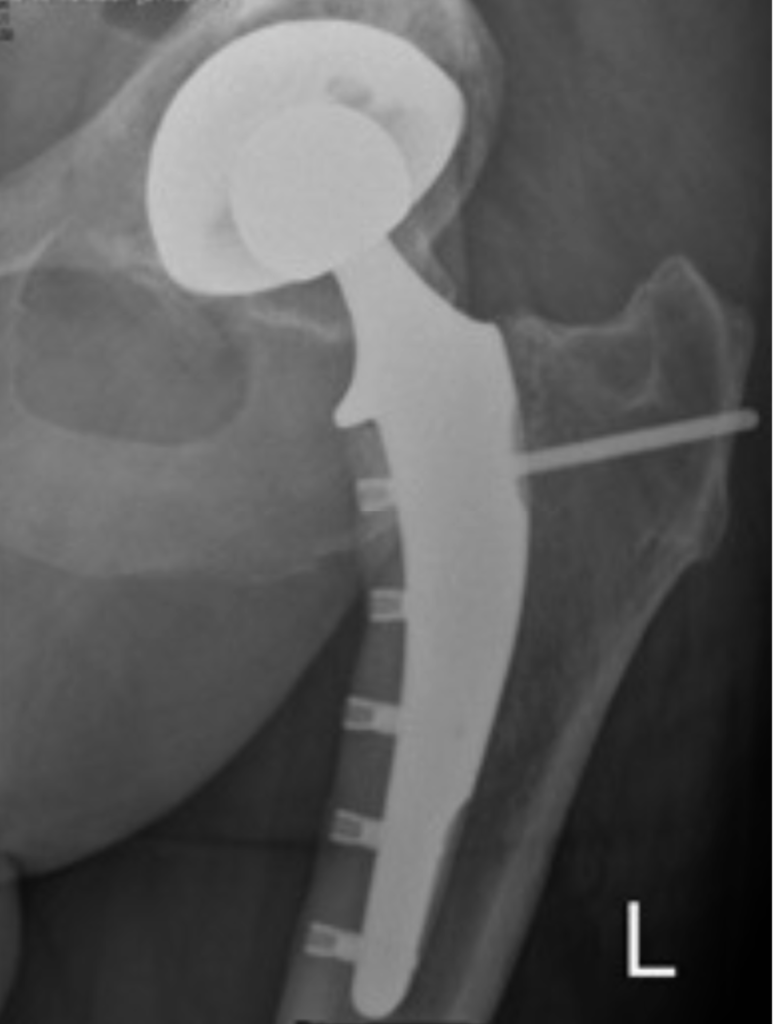
10 month follow-up x-ray with a SCYON THR stem.
The SCYON THR stem achieves permanent anchorage through bony ongrowth from the medial cortex without coupling to the lateral cortex.
The incidence of aseptic loosening is greatly reduced compared with conventional THR systems. (based on 14 years of canine clinical data)
Locking screw fixation to the medial cortex preserves biomechanical loading:
- Joint forces transferred to medial cortex
- No hoop stress generated as with press-fit stems
- No press fit to lateral cortex
- No stress shielding
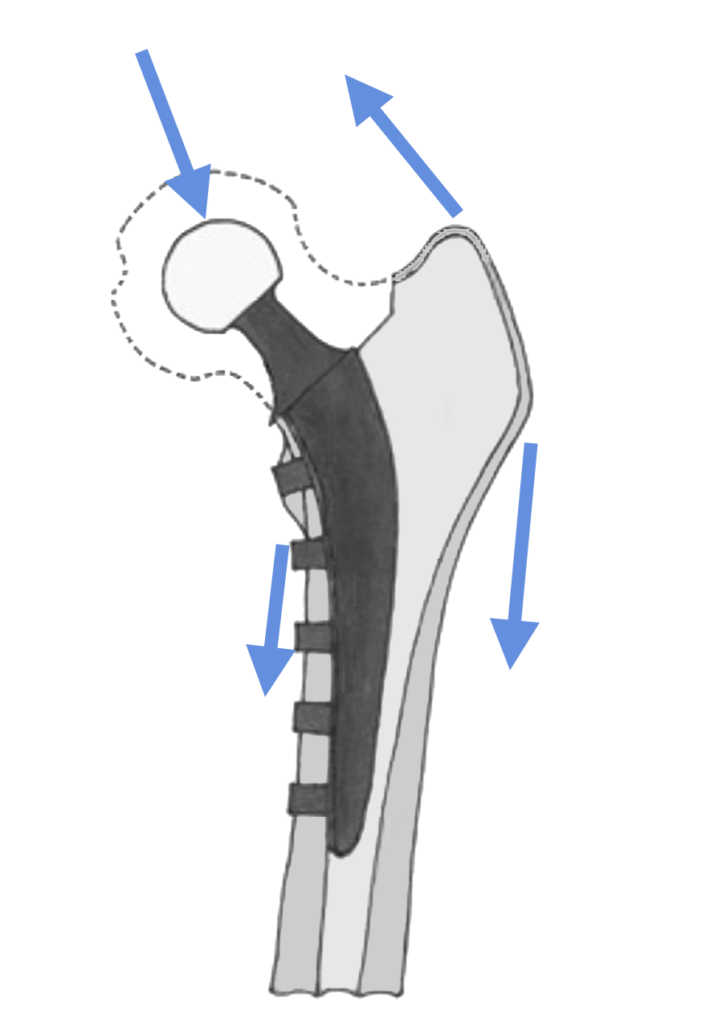
Compliant FOSSA™ Shell for Bone Ingrowth
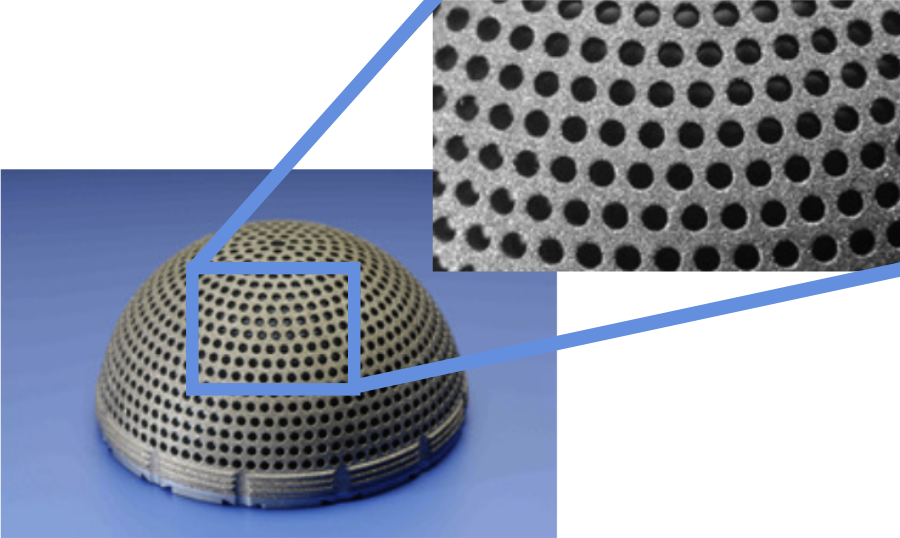
The perforated, hydraulically open, highly compliant, double-shelled titanium backing provides for rapid and consistent integration of the cup into the acetabulum.
The pores are designed to allow for unrestricted fluid flow through the outer shell. This facilitates convection-driven movement of bone growth factors.
Electron microscopy histological mosaic showing bony integration of the perforated titanium cup backing into the acetabulum at two years post-op (canine).
Courtesy of Dr. R. Boudrieau, Tufts University and Melinda Harman, The Biomotion Foundation, West Palm Beach, FL
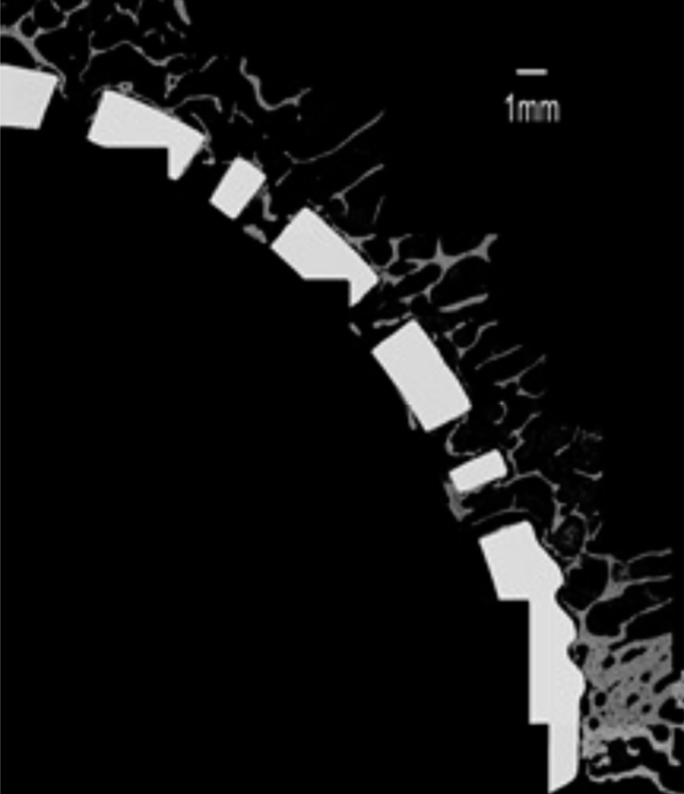
Wear Reducing Geometry of Cup Liner
UHMWPE cup liner articulating surface geometry significantly reduces the polyethylene wear and thus the risk of bone lysis mediated aseptic loosening.
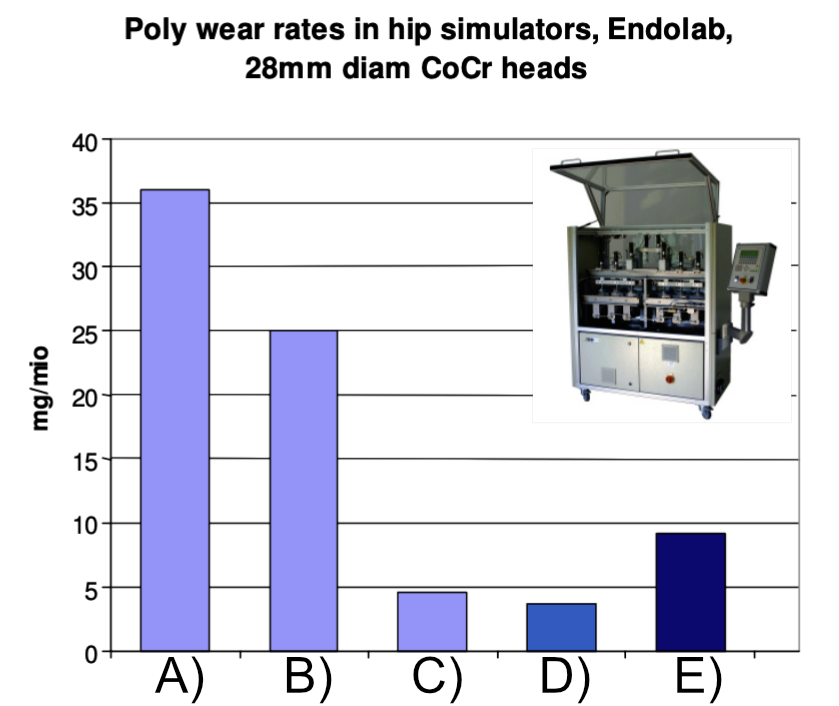
Testing the relative wear of the SCYON FOSSA™ cup compared to cups of conventional geometry.
- CoCr head on regular UHMWPE
- Ceramic head on regular UHMWPE
- CoCr head on cross-linked UHMWPE
- CoCr head on SCYON FOSSA cup, regular UHMWPE
- CoCr head on SCYON standard geometry cup, regular UHMWPE
Finite-Element Analysis of the maximum von Mises stress between the SCYON FOSSA™ and standard geometry cup.

SCYON standard geometry cup: max Von Mises stress of 9.6 MPa in UHMWPE liner with point contact at pole and 1.2 mm Ti support.
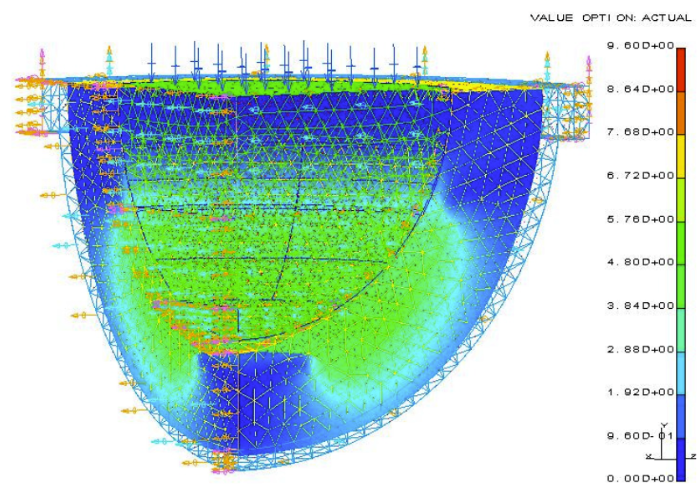
SCYON FOSSA™ cup: max Von Mises stress of 4.42 MPa in UHMWPE liner with contact at 45 degrees and 1.2 mm Ti support.
SCYON solutions for 3 main failure mechanisms of Total Hip Replacements:
- Loosening of the femoral stem component
- Immediate and permanent proprietary locking-screw fixation to the medial cortex.
- Near-physiological loading of the proximal femur – absence of stress shielding.
- Rough blasted surface for micro-interlock.
- Loosening of the acetabular cup component
- Proprietary hydraulically open, compliant, double shell, titanium backing for the cup.
- Rapid bony ingrowth into a highly compliant acetabular cup.
- Perforated outer shell allows good bone ingrowth.
- Minimal disruption of diaphysial cancellous bone.
- Wearing out of the joint bearing material
- SCYON FOSSA™ geometric feature allows significant wear reduction of the UHMWPE cup liner.
- Absence of wear-particle induced bone lysis.
Plus, although less talked about, a very important advantage is the reduction of the risk of complications due to fat embolism:
- SCYON instrumentation and implant design reduce, if not eliminate, pressure increases in the intramedulary canal that could result in pulmonary fat embolism.
